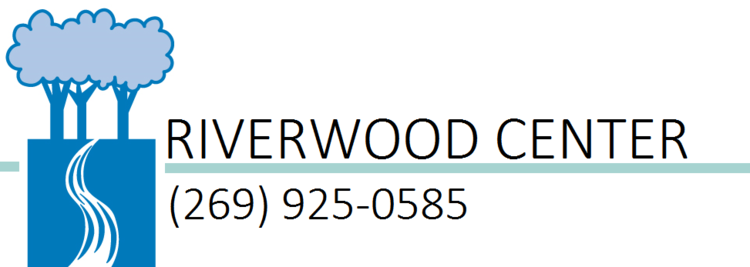What is MiniTab, and how does it support transactional (service industry) Six Sigma?
“For more than 40 years, Minitab has been providing global solutions for quality improvement professionals.
The world of process improvement experts trusts Minitab for quality, analysis and results.”
View breif introductions:
www.riverwoodcenter.org/minitab
Given the shortcomings of Excel, why would you use Excel over MiniTab?
“Because it is there.”
Why is MiniTab preferred to SPSS in the process improvement industry?
Minitab is a statistics package developed at the Pennsylvania State University, and the most commonly used
data manipulation and data cleaning package in the field, used most often in conjunction with the
implementation of six sigma, lean, CMMI and other data-driven process improvement methods.
Six Sigma Transactional Services (Service Industry) Components of the Training that Accompanies MiniTab/MiniTab supports:
Supports Lean through identifying, and cutting out unnecessary steps/data (cause of outliers)
Supports transactional Six Sigma by identifying and eliminating defects (process) and waste (paper etc.) to improve quality / efficiency
Why support from U of M, versus the stand-alone MiniTab (or pricier SPSS)?
Provided with the Lean Kata, Green and Black level online tools for the organization, with a focus on and real-time
support for concepts toward reducing costs, increasing quality, and accelerating process improvement.
Transactional Projects using MiniTab are supported by U of M resources for the employer.
Why is MiniTab use a best practice for Lean/Six Sigma service industry environments?
Quality control functionalities:
Large amounts of quick, statistical functionalities can be performed in Minitab, ranging from simple basic outlier identification, root cause identification, and statistics, to much more complicated multivariate analysis.
What makes Minitab stand out among many statistical softwares:
Its strength in quality contro tools, Minitab is equipped with almost all of the widely-used tools for process
control, including analyzing methods, graphics, designs of time-to-service/wait time experiments, etc.
Minitab is the leading software package used by quality improvement professionals in all kinds of industries around the world.
MiniTab clients include (manufacturing) GE, TOSHIBA, (service industries) Bank of America, SAMSUNG, etc.
MiniTab Basic Features: Overview
1 and 2 Proportions, 1 and 2 Sample t
1 and 2 Variances
1 Sample Sign
1 Sample Wilcoxon
1 Sample Z
ANOVA
Bar Chart
Boxplot
Chi-Square Goodness-of-Fit
Control Charts
Correlation
Covariance
Cross Tabulation and Chi-Square
Cumulative Distribution Function
Data
Descriptive Statistics
Dotplot
Exponential Smoothing
Factorial Plots
Formula Calculator
Friedman
Graphs
Histogram
Hypothesis Tests
I-MR
Indicator Variables
Individual Value Plot
Individuals
Interaction Plot
Interval Plot
Inverse Cumulative Distribution Function
Kruskal-Wallis
Main Effects Plot
Mann-Whitney
Mood
Moving Average
Multiple Regression
Nonparametrics
Normality Test
One-Way ANOVA
P
Paired t
Pattern Text Data
Patterned Numeric Data
Pie Chart
Prediction
Probability Density Function
Probability Distribution Plot
Probability Distributions
Probability Plot
Random Data
Random Sample from Columns
Rank
Recode
Regression
Runs Test
Scatterplot
Simple Regression
Sort
Stack Columns
Standardize
Stem-and-Leaf Plot
Summary Statistics
Tables
Tally
Test for Equal Variances
Time Series and Forecasting
Time Series Plot
Trend Analysis
Two-Way ANOVA
U
Unstack Columns
Xbar
Xbar-R
Xbar-S
MiniTab Components specific to transactional/service industry MiniTab use (EHR implementation implications):
DMAIC Problem Solving Process
Measuring the Current State of the Kata Process (DPM, DPMO, Yield)
Best Practices in Quality Tools
Six Sigma Problem Solving
Assessing Process Stability: Variable Control Charts
Statistical Process Control: Attributes Charts/Special
Process Capability Analysis: Normal (typical)
Process Capability: Non-normal
Two Variable Analysis: Correlation Analysis
Two Group Hypothesis Tests (F-tests, t-tests)
Attribute Responsse (proportions/yield analysis)
One-Factor ANOVA: Robust Operating Windows
Measurement System Analysis: Gage R&R
Voice of the Customer Survey/Survey Analysis
Multiple Regression/Stepwise Regression
DOE: Principles of Design of Experiments
DOE: 2k Factorial, General Linear Model
DOE: Full Factorial Designs—Interactions
DOE: Taguchi Methods
Failure Mode and Effects Analysis
Design for Reliability
Service Design Verification Analysis
Tolerance Analysis
Control Systems (accreditation alignment)
